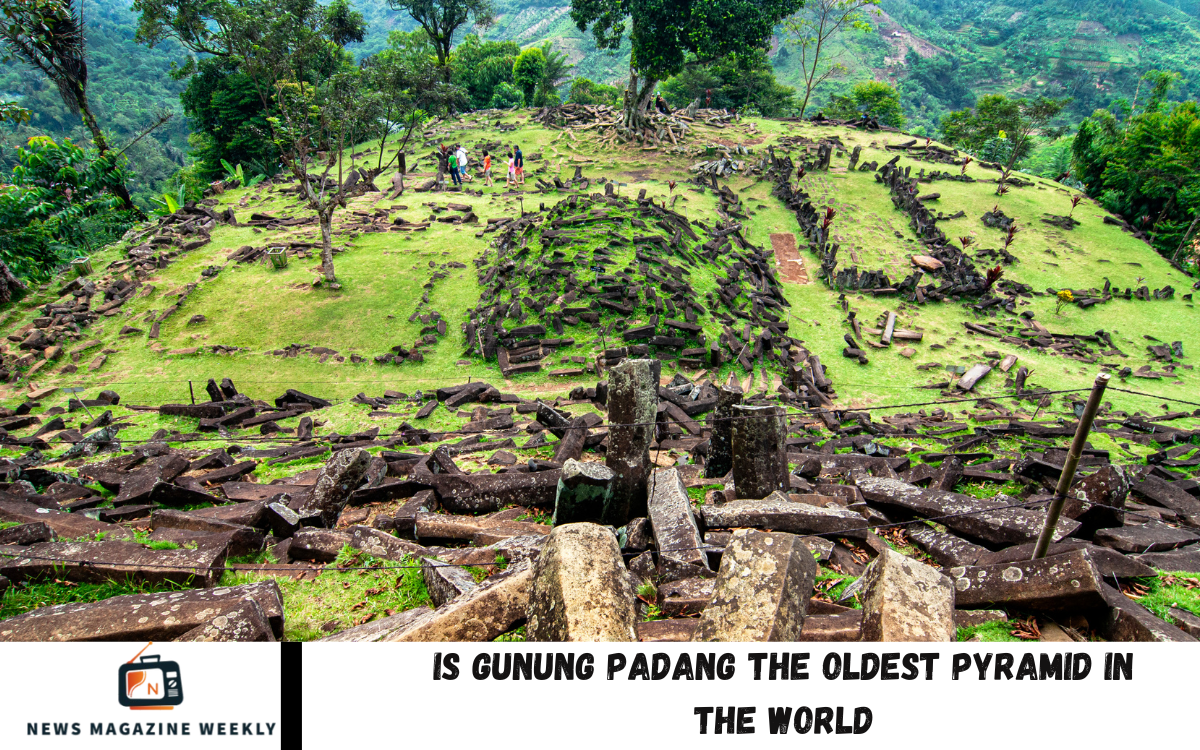Gunung Padang, located in West Java, Indonesia, has sparked considerable interest among archaeologists and researchers due to its controversial classification as potentially the oldest pyramid in the world. The site consists of a massive megalithic structure built into a hill, which some experts believe to be thousands of years older than Egypt’s Great Pyramid of Giza.
Although initially thought to be a natural formation, excavations, and geological studies suggest that Gunung Padang is an artificial pyramid built with large stone blocks arranged in terraces. Some researchers claim that Gunung Padang could date back over 20,000 years, making it not only the oldest pyramid but also possibly the oldest known large-scale construction in human history.
The site features intricate stonework, which, if verified as artificial, would imply advanced engineering knowledge far earlier than previously thought. However, the theory remains controversial, with some scholars questioning the evidence and asserting that the structure’s actual age is still unknown. Gunung Padang continues to be a subject of debate, captivating both historians and those intrigued by ancient.
What is Gunung Padang?
Gunung Padang is an ancient megalithic site located in West Java, Indonesia. It consists of a sizeable pyramid-like structure built into the side of a hill, made from massive stone blocks arranged in terraces. The site is spread over an area of approximately 3 hectares (7.4 acres) and is thought to be composed of multiple layers of stonework.
Some researchers believe the structure was constructed by an ancient civilization with advanced engineering knowledge, although the full extent of its purpose and history remains unclear. Gunung Padang was considered to be a natural formation, but recent studies and excavations have suggested that it may be an artificial pyramid or temple complex.
The site has attracted significant attention due to its potential age, with some theories proposing that it could be over 20,000 years old. If proven true, this would make it the oldest known pyramid in the world, predating other ancient structures such as the Great Pyramid of Giza. Gunung Padang continues to be a topic of debate among archaeologists, with ongoing studies attempting to unlock the mysteries surrounding its origins and purpose.
When Was Gunung Padang Discovered?
Locals first discovered Gunung Padang in the early 20th century, but its significance was not recognized until much later. In 1914, a Dutch engineer named W. F. Stutterheim conducted a preliminary study of the site during his travels through Indonesia. He noted the large stone structures and terraces, but at the time, it was still regarded as a natural formation rather than an artificial structure.
It wasn’t until the 1970s that the site began to receive more attention from archaeologists and researchers who suspected it could be a historical site of greater importance. The true extent of Gunung Padang’s significance was uncovered during a more extensive survey and excavation starting in the 2000s. In 2011, Indonesian geologist Dr. Danny Hilman Natawidjaja led a team of researchers who conducted detailed surveys of the site, utilizing advanced technologies such as ground-penetrating radar.
(GPR) to probe beneath the surface. Their findings revealed multiple layers of stone construction buried under the hill, suggesting that Gunung Padang was not a natural geological formation but rather an artificial structure. This discovery raised the possibility that Gunung Padang could be much older and more complex than previously thought.
How Old is Gunung Padang?
The age of Gunung Padang remains one of the most debated aspects of the site, with estimates ranging from thousands to tens of thousands of years old. Initial studies, including geological surveys and archaeological excavations, have suggested that the site could be far older than previously believed, possibly dating back over 20,000 years.
Some researchers, including Dr. Danny Hilman Natawidjaja, who led key studies in the 2010s, have proposed that the structure could have been built around 28,000 to 30,000 years ago based on the layers of construction discovered beneath the surface. This proposed age would make Gunung Padang significantly older than other famous ancient pyramids, such as Egypt’s Great Pyramid of Giza, which is estimated to be about 4,500 years old.
The theory that Gunung Padang is over 20,000 years old challenges the current understanding of ancient civilizations and human development. It suggests that advanced construction techniques were utilized by a society long before the well-documented civilizations of Mesopotamia, Egypt, or the Indus Valley.
What Does Gunung Padang Reveal About Ancient Civilizations?
If confirmed as an ancient man-made structure, Gunung Padang could dramatically alter our understanding of early human civilization. The site, with its intricate stonework and sophisticated design, suggests that ancient civilizations may have possessed advanced knowledge of engineering, architecture, and construction techniques far earlier than traditionally believed.
Gunung Padang’s location and design raise questions about the cultural and religious practices of the civilization that constructed it. The pyramid-like structure, built in terraces, suggests a strong understanding of geometry and astronomy, possibly indicating that the builders knew about celestial movements.
Some theories propose that Gunung Padang may have been used as a ceremonial site or observatory, pointing to a sophisticated understanding of the natural world. The site’s scale and complexity also suggest that the civilization behind it was capable of organizing large, labor-intensive projects, hinting at social structures and leadership roles that could have been in place long before the rise of more traditionally documented ancient societies.
Frequently Asked Questions
What makes Gunung Padang different from other pyramids?
Gunung Padang is proposed to be older than other known pyramids, including the Great Pyramid of Giza, which challenges the traditional timeline of human civilization.
What evidence supports the claim that Gunung Padang is the oldest pyramid?
Evidence includes the discovery of multiple layers of stonework beneath the hill, ground-penetrating radar (GPR) scans, and geological surveys suggesting advanced construction techniques.
Why is the age of Gunung Padang controversial?
The proposed age of over 20,000 years is disputed by some experts, with critics questioning the methodology used in dating the site and calling for more extensive research.
Could Gunung Padang reveal information about ancient civilizations?
If proven to be as old as claimed, Gunung Padang could suggest the existence of advanced civilizations far earlier than previously thought, offering new insights into early human history.
What further research is needed to confirm Gunung Padang’s age and significance?
Ongoing excavation, radiocarbon dating, and geological studies are necessary to confirm the site’s age and whether it truly is a pyramid, helping to clarify its purpose and historical context.
Conclusion
The question of whether Gunung Padang is the oldest pyramid in the world remains an intriguing and controversial topic in archaeology. While evidence suggests that the site could be far older than previously thought, with some researchers proposing an age of over 20,000 years, the true origins of Gunung Padang are still debated.

